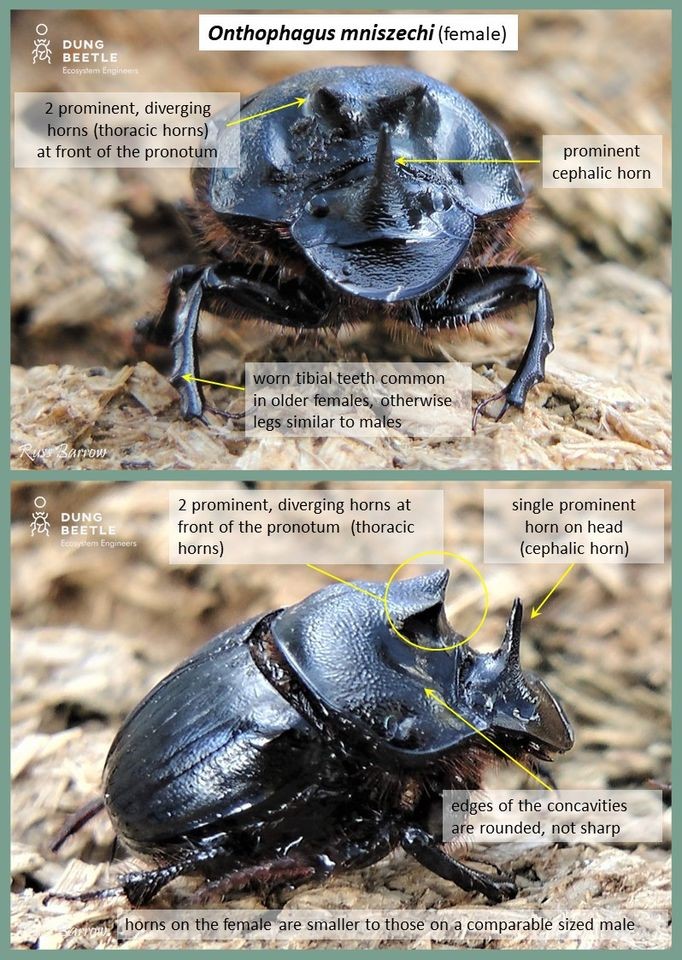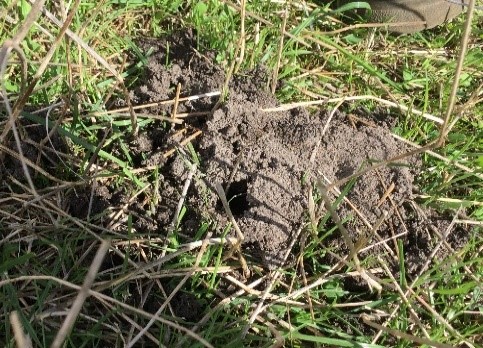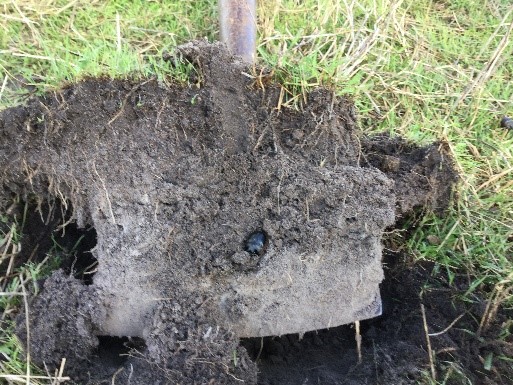Onthophagus mniszechi (native)


Size
15–22 mm
Colour
Shiny black
Horns
Single, prominent horn on head and two horns on front of pronotum
Active seasons
Found all year, but most commonly from spring through to autumn.
Distribution in Australia
Victoria, WA, SA, NSW
South West Prime Lamb Group (SWPLG) demonstrations
O. mniszechi is a native dung beetle, also known as Three-horned dung beetle and Kershaw’s burying beetle. It has been trapped at Narrawong, Heywood, Cashmore and Hamilton in good numbers throughout the year (see below). There is little information available about O. mniszechi in comparison to the other dung beetles found during the demonstration. However, a paddock walk at Heywood showed lots of beetle activity in fresh sheep dung, with tunnelling to around 20 cm and soil brought to the surface. It has also found to be prolific at Cashmore. Anecdotally, native beetles such as O. mniszechi are becoming more active on sheep and cattle dung, having evolved with drier, native animal dung (pers. comm. John Feehan).
Dung burial
O. mniszechi has been observed tunnelling into the subsoil, burying dung to around 20 cm and bringing subsoil to the surface. Tunnels allow movement of moisture and plant roots into the subsoil, where beetle activity raises the levels of nutrients and moisture and creates favourable conditions for plant roots.
Preferences
Unclear. However, most sightings of O. mniszechi in the region have been on light soils.




Acknowledgements and references
Identification photos by Russ Barrow, Dung Beetle Ecosystem Engineer (DBEE) Project